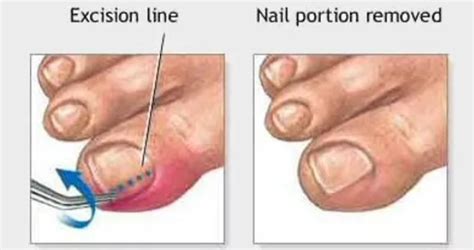Avoid Costly Mistakes: Ingrown Toenail Removal
Ingrown toenails are a common and painful problem, causing inflammation, redness, and even infection. While many cases can be treated at home, attempting DIY removal without proper knowledge can lead to serious complications. This comprehensive guide will help you understand ingrown toenails, avoid costly mistakes, and determine when professional help is necessary.
What is an Ingrown Toenail?
An ingrown toenail occurs when the edge of a toenail grows into the surrounding skin, usually at the sides of the big toe. This causes pain, swelling, and redness. The pressure from the nail can lead to infection, making the situation significantly worse. Several factors contribute to ingrown toenails, including improperly trimmed nails, ill-fitting shoes, and certain medical conditions.
How to Treat a Mild Ingrown Toenail at Home
For mild cases, home treatment may suffice. However, it's crucial to understand the limitations of home remedies. If the condition worsens or shows signs of infection, seek professional help immediately.
Here are some home treatments that may help:
- Soaking: Soak your foot in warm, soapy water several times a day for 15-20 minutes. This helps soften the skin and nail, making it easier to manage.
- Elevation: Elevate your foot to reduce swelling.
- Over-the-counter pain relief: Use pain relievers like ibuprofen or acetaminophen to manage discomfort.
- Cotton placement (with caution): Gently lift the ingrown portion of the nail with a sterile cotton swab or small piece of cotton and place it under the nail edge. This creates space for the skin to heal. Do not force this, and consult a podiatrist if you are unsure.
Important Note: Avoid cutting or pulling at the ingrown portion of the nail yourself. This can worsen the problem and increase the risk of infection.
When to See a Podiatrist: Recognizing Serious Complications
While home remedies can be helpful for mild cases, it's crucial to seek professional help when complications arise. Ignoring serious signs can lead to:
- Severe pain and swelling: If the pain is intense or the swelling is significant, you need professional attention.
- Infection: Signs of infection include pus, increased redness, warmth, and throbbing pain. Infections can spread rapidly and require medical treatment with antibiotics.
- Bleeding: Excessive bleeding from the affected area requires immediate medical attention.
- No improvement after home treatment: If home remedies haven't shown any improvement after a few days, don't delay seeking professional care.
Ignoring these signs can lead to costly complications, including:
- Prolonged healing time and increased discomfort: Delaying treatment means enduring unnecessary pain and a longer recovery period.
- The need for more extensive procedures: A minor ingrown toenail can develop into a major problem requiring surgical intervention if not treated early.
- Increased medical expenses: Addressing an infected or severely ingrown toenail will typically cost more than early intervention.
What Happens During Professional Ingrown Toenail Removal?
A podiatrist will assess the severity of your ingrown toenail and recommend the best course of action. This might involve:
- Partial nail avulsion: The podiatrist will remove the ingrown portion of the nail.
- Chemical matrixectomy: A chemical is applied to destroy the nail matrix, preventing regrowth of the ingrown portion.
- Surgical removal of the nail: In severe cases, complete nail removal may be necessary.
Preventing Ingrown Toenails: Proactive Measures
The best way to avoid costly mistakes and the pain of ingrown toenails is prevention. Here are some key strategies:
- Proper Nail Trimming: Trim your nails straight across, avoiding rounded edges.
- Wear Well-Fitting Shoes: Avoid shoes that are too tight or constrict your toes.
- Maintain Good Foot Hygiene: Keep your feet clean and dry.
- See a Podiatrist Regularly: Regular checkups can identify and address potential problems early on.
Conclusion: Prioritize Prevention and Early Treatment
Ingrown toenails can be a painful and sometimes costly problem. By understanding the causes, recognizing serious complications, and taking proactive measures, you can minimize your risk and avoid unnecessary expenses and prolonged discomfort. When in doubt, consult a podiatrist—early intervention is key to preventing more severe issues. Remember that while home remedies may help with mild cases, professional help is essential when complications arise. Don't delay seeking professional care if your ingrown toenail shows signs of infection or doesn't respond to home treatment.

